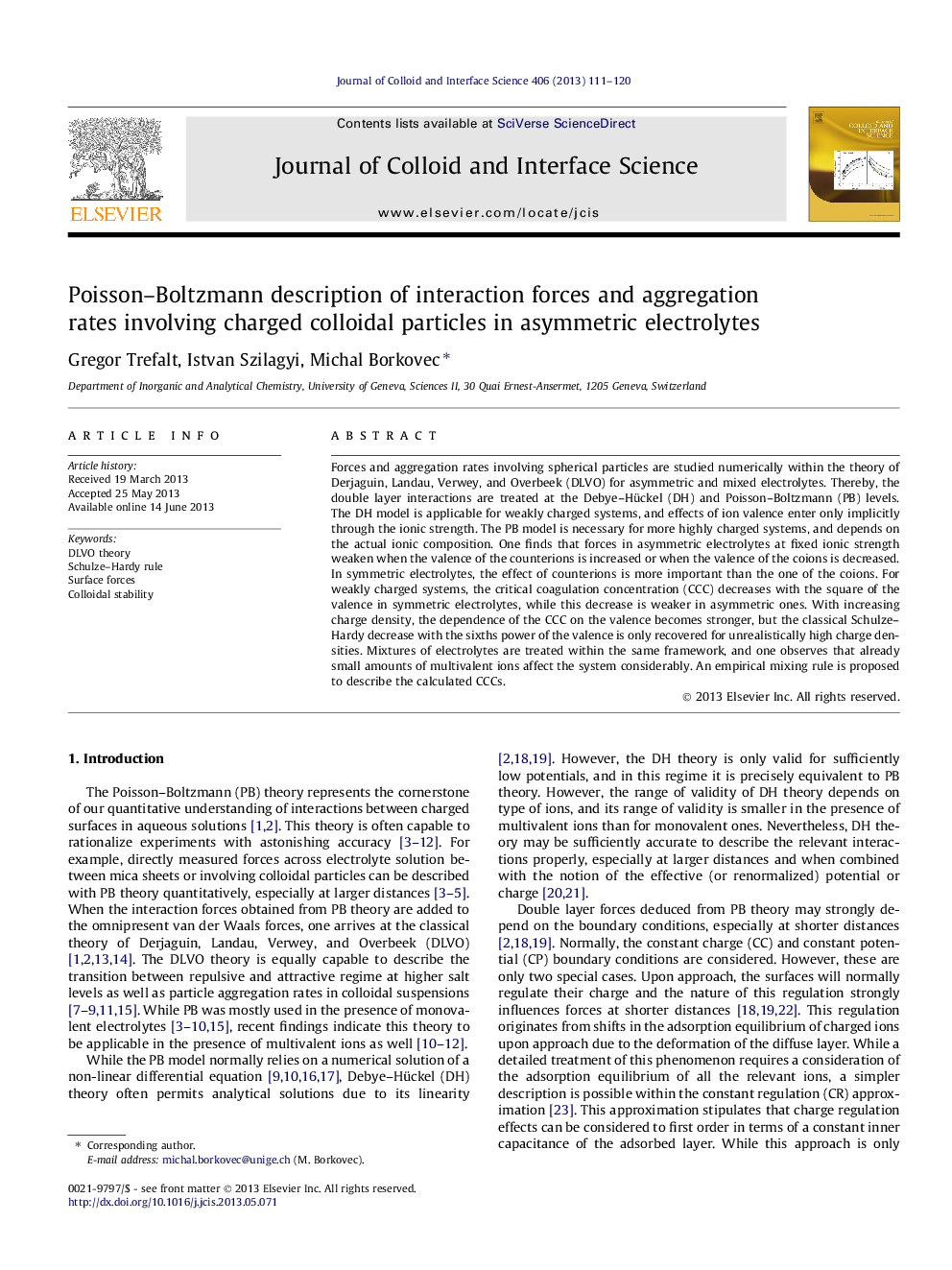| Article ID | Journal | Published Year | Pages | File Type |
|---|---|---|---|---|
| 607606 | Journal of Colloid and Interface Science | 2013 | 10 Pages |
•Forces and aggregation were studied within DLVO theory in asymmetric and mixed electrolytes.•The forces weaken with increasing counterion valence or when valence of the coions is decreased.•Critical coagulation concentration follows the inverse valence squared for low charge.•Classical Schulze–Hardy sixth power dependence is recovered for unrealistically high charge.
Forces and aggregation rates involving spherical particles are studied numerically within the theory of Derjaguin, Landau, Verwey, and Overbeek (DLVO) for asymmetric and mixed electrolytes. Thereby, the double layer interactions are treated at the Debye–Hückel (DH) and Poisson–Boltzmann (PB) levels. The DH model is applicable for weakly charged systems, and effects of ion valence enter only implicitly through the ionic strength. The PB model is necessary for more highly charged systems, and depends on the actual ionic composition. One finds that forces in asymmetric electrolytes at fixed ionic strength weaken when the valence of the counterions is increased or when the valence of the coions is decreased. In symmetric electrolytes, the effect of counterions is more important than the one of the coions. For weakly charged systems, the critical coagulation concentration (CCC) decreases with the square of the valence in symmetric electrolytes, while this decrease is weaker in asymmetric ones. With increasing charge density, the dependence of the CCC on the valence becomes stronger, but the classical Schulze–Hardy decrease with the sixths power of the valence is only recovered for unrealistically high charge densities. Mixtures of electrolytes are treated within the same framework, and one observes that already small amounts of multivalent ions affect the system considerably. An empirical mixing rule is proposed to describe the calculated CCCs.
Graphical abstractFigure optionsDownload full-size imageDownload high-quality image (91 K)Download as PowerPoint slide
